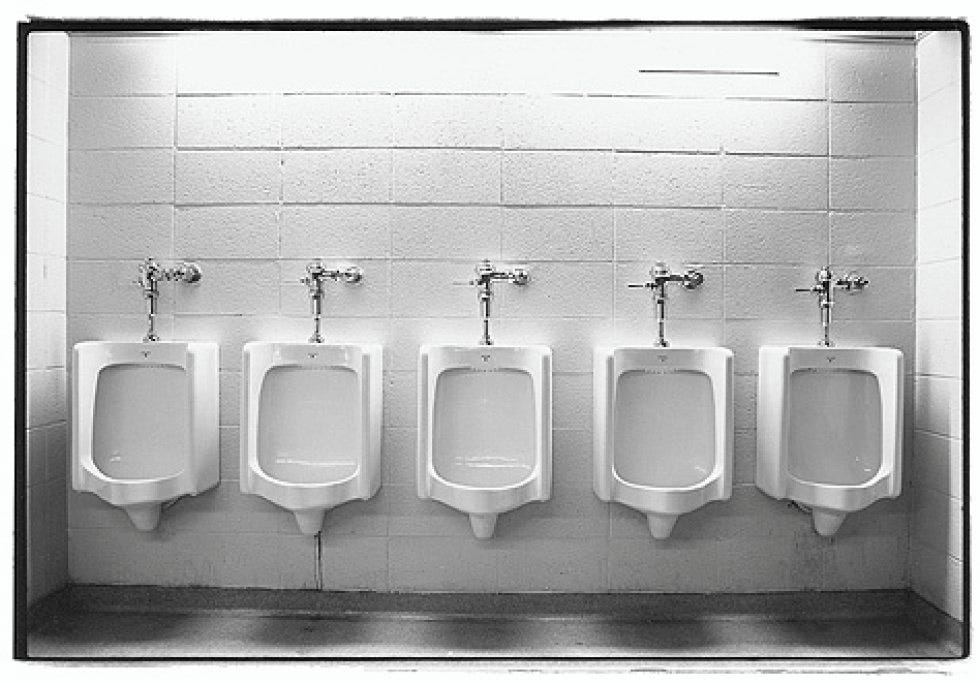Bathroom urinals are a staple in public restrooms. They are designed for quick and easy use.
Urinals help maintain hygiene and save water. They come in various designs and sizes to fit different needs. From schools to offices, they are an essential part of modern restrooms. Understanding their benefits and types can help you make better choices.
Whether you’re renovating a bathroom or installing new fixtures, knowing about urinals is useful. They not only improve cleanliness but also offer convenience. In this blog post, we will explore the advantages and different types of bathroom urinals. Stay tuned to learn more about this important restroom fixture.
Introduction To Modern Urinals
The modern urinal is a staple in many public restrooms. It offers convenience and hygiene. Urinals have transformed from simple fixtures to sophisticated designs. They now save water and enhance restroom aesthetics. Understanding their evolution can give insight into their current form and function.
History Of Urinals
Urinals have been in use for centuries. The first urinals were simple holes or trenches. They were used in ancient civilizations. In the 19th century, the porcelain urinal became popular. These fixtures were easy to clean and maintain. They became common in public restrooms and workplaces.
Evolution In Design
Modern urinals have seen significant design changes. Early designs were bulky and used a lot of water. Today’s urinals are sleek and water-efficient. They come in various shapes and sizes. Many modern urinals are wall-mounted. This saves space and makes cleaning easier.
| Era | Design Characteristics |
|---|---|
| Ancient Times | Simple holes or trenches |
| 19th Century | Porcelain fixtures, floor-mounted |
| Modern Day | Sleek, wall-mounted, water-efficient |
Modern urinals also focus on sustainability. Many use sensor-activated flushing systems. This reduces water waste. Some urinals are even waterless. They use a special trap to seal odors. These designs are eco-friendly and cost-effective.
The materials used have also improved. Early urinals were made of porcelain. Modern urinals use stainless steel, ceramic, and even recycled materials. These materials are durable and easy to clean. They also offer a more modern look.
Design advancements also consider user comfort. Urinals now have ergonomic designs. They are at a height that is comfortable for most users. Some even have privacy screens for added comfort.

Credit: en.wikipedia.org
Hygiene Benefits
Bathroom urinals offer significant hygiene benefits. They contribute to a cleaner environment. This results in a more pleasant experience for users. Let’s explore two key hygiene advantages: reduced splashback and hands-free operation.
Reduced Splashback
Urinals are designed to minimize splashback. This design reduces the spread of bacteria. It also keeps the floor dry. A dry floor means fewer slips and falls. Overall, urinals help maintain a cleaner bathroom.
Hands-free Operation
Many modern urinals feature hands-free operation. Users do not need to touch any surfaces. This reduces the spread of germs. Automatic flushing systems further enhance cleanliness. Hands-free operation makes bathroom use more hygienic.
Environmental Impact
Bathroom urinals are becoming more popular in homes and businesses. Their environmental impact is worth noting. They can significantly reduce water usage and support sustainability efforts. Let’s dive into two critical aspects: water conservation and sustainable materials.
Water Conservation
Urinals use much less water than traditional toilets. Some even require no water at all. This is a huge benefit for water conservation. With fresh water becoming scarce, urinals help save this precious resource. Modern urinals are designed to use as little water as possible. This can lead to significant savings over time. Waterless urinals are particularly eco-friendly. They use a special trap to manage odors without water. This innovative design reduces water usage and maintenance costs.
Sustainable Materials
Many urinals are now made from sustainable materials. These include recycled ceramics and eco-friendly plastics. Using these materials helps reduce the environmental footprint. It also supports recycling efforts and reduces waste. Some manufacturers even use biodegradable materials. This ensures the urinals have a minimal impact on the environment when they are replaced. Sustainable materials also tend to be more durable. This means fewer replacements and less waste over time.
Technological Advancements
Technological advancements have transformed bathroom urinals into smart and efficient fixtures. Modern urinals now offer features that enhance user experience and hygiene. These innovations make public restrooms cleaner and more user-friendly.
Sensor-based Systems
Sensor-based systems have become a standard in many public restrooms. These systems detect when a person approaches and automatically flush. This reduces the need for physical contact, which promotes better hygiene.
Automatic flush systems also help in water conservation. They use the right amount of water needed for each flush. This not only saves water but also reduces utility costs. Many models come with adjustable settings for water usage.
Sensor-based systems also reduce wear and tear. With no manual flush handles, there are fewer parts that can break. This means less maintenance and fewer repairs over time.
Self-cleaning Features
Self-cleaning features are another significant technological advancement. These urinals clean themselves after every use, ensuring a high level of cleanliness. This is especially important in high-traffic areas.
Self-cleaning urinals use special cleaning agents or UV light. These methods kill bacteria and remove odors. This results in a fresher environment for users.
These features also reduce the need for frequent manual cleaning. This can save time and labor costs for businesses. It also ensures that restrooms stay clean throughout the day, improving user satisfaction.
Design Innovations
Design innovations in bathroom urinals have transformed our restroom experiences. These changes focus on user comfort and visual appeal. Let’s explore some key aspects of these innovations.
Ergonomic Designs
Ergonomic designs in urinals prioritize user comfort. They reduce strain and enhance ease of use. Shaped to fit the natural body posture, these urinals improve user experience. They also reduce the risk of spills, keeping the area cleaner.
Aesthetic Considerations
Aesthetic considerations in urinal design make restrooms look inviting. Modern urinals come in sleek and stylish shapes. They blend with contemporary bathroom décor. These designs use high-quality materials, ensuring durability and a polished appearance.

Credit: medium.com
Cost Efficiency
Cost Efficiency is a significant factor when choosing bathroom urinals. They offer numerous advantages that make them an ideal choice for businesses, public places, and even homes. One of the most prominent benefits is the reduction in maintenance costs and the value they provide as long-term investments. This makes them a smart financial decision in the long run.
Maintenance Savings
Urinals are designed for easy cleaning and durability. This reduces the need for frequent repairs. Traditional toilets often require more water and more cleaning supplies. Urinals, on the other hand, are more efficient in water use and require less effort to maintain. This means lower costs for cleaning staff and supplies.
Here is a comparison of maintenance costs:
| Feature | Traditional Toilets | Urinals |
|---|---|---|
| Water Usage | High | Low |
| Cleaning Supplies | More | Less |
| Staff Hours | More | Less |
Long-term Investments
Choosing urinals is a smart long-term investment. They last longer and are less prone to damage. This means fewer replacements and less money spent on repairs. Over time, the savings can be substantial. Business owners and facility managers should consider this when planning their budgets.
Key benefits of urinals as long-term investments:
- Durability: Designed to last longer.
- Efficiency: Lower water and maintenance costs.
- Cost-Effective: Reduces the need for replacements.
In the end, the choice of urinals over traditional toilets is not just about immediate savings. It’s about making a wise financial decision that will benefit you in the long run.
User Experience
User Experience is a crucial aspect when designing bathroom urinals. A well-designed urinal can enhance the overall experience for users. This section delves into the importance of Accessibility and Comfort for a positive user experience.
Accessibility
Ensuring accessibility in bathroom urinals is essential. Every user should have the ability to use a urinal comfortably. Accessible urinals cater to individuals with disabilities, the elderly, and children.
- Install urinals at various heights.
- Include grab bars for stability.
- Ensure ample space for wheelchairs.
These features help create an inclusive environment.
Comfort
Comfort plays a significant role in the user experience. A comfortable user is a happy user. Factors contributing to comfort include:
- Sufficient privacy dividers
- Adequate lighting
- Proper ventilation
A well-ventilated space with good lighting ensures a pleasant experience.
Privacy dividers provide a sense of personal space. This reduces anxiety and promotes comfort.

Credit: www.americanstandard-us.com
Future Trends
Bathroom urinals have come a long way in design and functionality. The future trends in bathroom urinals are set to transform public restrooms. These innovations promise to improve hygiene, efficiency, and user experience. Let’s explore some of these exciting trends.
Smart Restrooms
Smart restrooms are equipped with advanced technology. They offer enhanced user experiences and improved cleanliness. Smart urinals can detect usage patterns and adjust water flow accordingly. This helps in conserving water and reducing wastage.
Some smart urinals have sensors to monitor usage. They can automatically flush after each use. This ensures hygiene and reduces the need for manual cleaning. Other features include auto-deodorizing systems and touchless controls.
Integration With Iot
The Internet of Things (IoT) is making restrooms more connected. IoT-enabled urinals can communicate with other devices. They can send data to central systems for maintenance and monitoring.
Benefits of IoT in Urinals:
- Real-time monitoring of usage
- Predictive maintenance to avoid breakdowns
- Data collection for better resource management
IoT integration allows for remote management of restrooms. Facility managers can receive alerts about issues. This helps in timely maintenance and reduces downtime.
| Feature | Benefit |
|---|---|
| Smart Sensors | Improved Hygiene |
| Auto-Deodorizing | Odor Control |
| IoT Integration | Efficient Maintenance |
The future of bathroom urinals is exciting. With smart technology and IoT, restrooms will become more efficient and user-friendly. These innovations promise a cleaner and more convenient experience for everyone.
Case Studies
Case studies of bathroom urinals reveal much about their efficiency and user satisfaction. They offer insight into how these fixtures perform in different environments. Let’s explore some successful implementations and public feedback on bathroom urinals.
Successful Implementations
Many public restrooms have adopted modern urinals. Airports, for instance, have seen improvements in cleanliness and efficiency. New designs reduce splash and odor. This helps maintain a more hygienic environment.
Schools also benefit from updated urinals. They are easier to clean and reduce water usage. This makes them cost-effective and eco-friendly.
Sports arenas report smoother traffic flow in restrooms. This is especially important during events. Quick, efficient use of urinals ensures shorter wait times for fans.
Public Feedback
Users generally appreciate the improvements in urinals. They find modern designs more pleasant and cleaner. Reduced odor is a significant plus.
Some feedback highlights the ease of use. Many users find sensor-operated urinals very convenient. They appreciate the touch-free experience, especially in public restrooms.
Overall, feedback points to a better restroom experience. Users feel more comfortable and satisfied with the updated facilities.
Frequently Asked Questions
What Are The Benefits Of Bathroom Urinals?
Bathroom urinals save space and water, making them eco-friendly. They are also easy to clean and maintain. Urinals provide a hygienic option for public restrooms. They can reduce waiting times in busy areas.
How Do You Clean A Bathroom Urinal?
To clean a urinal, use a disinfectant cleaner. Scrub the surface with a brush, especially around the drain. Rinse thoroughly with water. Regular cleaning prevents odors and buildup.
Are Urinals Suitable For Home Bathrooms?
Yes, urinals can be installed in home bathrooms. They are space-saving and convenient. However, they are more common in public or commercial restrooms.
How Much Water Do Urinals Use?
Traditional urinals use about 1-3 gallons per flush. Waterless urinals are also available, which use no water and are environmentally friendly.
Conclusion
Urinals can make bathroom spaces more efficient and hygienic. They save water and reduce maintenance costs. Installing urinals can also help with space management. Choose a design that fits your bathroom’s style and needs. Proper installation and regular cleaning are essential.
This ensures a pleasant experience for all users. For both homes and businesses, urinals offer practical benefits. Consider these points when planning your bathroom upgrade.

My name is Mahi Uddin, and I’m a blog writer with over two years of experience specializing in creating engaging, informative content using AI tools. I contribute to InExDecor.com, where I share creative ideas and practical tips for transforming interior and exterior spaces into beautiful, functional environments. With a passion for storytelling and a knack for blending creativity with technology, I strive to craft blogs that not only inform but also inspire readers. When I’m not writing, you can find me exploring design trends or enjoying a good book with a cup of coffee.








